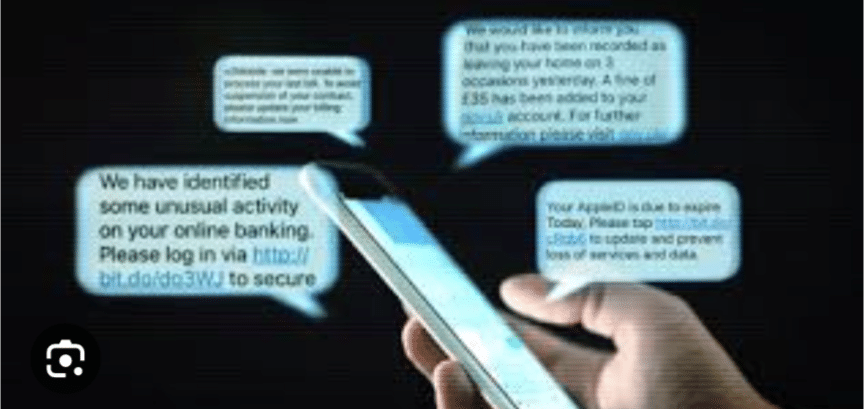
Ransomware Attacks: When Teens Become the Threat
November 16, 2023
Smart Shopping: Avoiding Scams and Fraud During the Holiday Rush
November 19, 2023In today’s interconnected world, our smartphones have become indispensable tools, serving as gateways to information, communication, and a myriad of digital services. Amidst the convenience and accessibility they offer, however, lies a lurking threat – smishing scams. These deceptive text messages, a blend of “SMS” (short message service) and “phishing,” aim to trick unsuspecting users into revealing sensitive information or taking actions that compromise their security.
Smishing scams often exploit the urgency and distraction that can accompany text messages. Scammers may pose as legitimate companies, government agencies, or even friends or family members, crafting messages that trigger a sense of urgency or create a false sense of familiarity.
Identifying the Red Flags
To protect yourself from smishing scams, it’s crucial to recognize the red flags that often mark these deceptive messages. Here are some key indicators to watch out for:
- Unsolicited Messages from Unknown Numbers: Be wary of text messages from unfamiliar senders, especially those containing links or requests for personal information.
- Sense of Urgency: Scammers often try to pressure you into acting without thinking by creating a sense of urgency. They may claim that there’s a problem with your account, an urgent delivery issue, or a time-sensitive opportunity.
- Generic Greetings: Smishing messages often use generic greetings like “Dear customer” or “Hi friend,” as they are sent out in bulk to a wide range of recipients. Legitimate companies will typically address you by your name.
- Suspicious URLs: If a text message contains a link, hover your cursor over it to see the actual URL. If it doesn’t match the company’s website address or looks suspicious, don’t click on it.
- Requests for Personal Information: Never provide personal information, such as passwords, credit card numbers, or Social Security numbers, over text message. Legitimate companies will not ask for this type of information via text.
Safeguarding Your Digital Life
To effectively shield yourself from smishing scams, adopt these protective measures:
- Avoid Clicking Links in Suspicious Messages: Never click on links in unsolicited text messages. Instead, type the company’s website address directly into your browser or contact them through a verified phone number or email address.
- Refrain from Responding to Unsolicited Texts: Replying to a smishing message can alert the scammer that your number is active, making you a more likely target for future scams.
- Utilize Security Software: Install and maintain up-to-date security software on your phone to protect against malware and phishing attacks.
- Report Smishing Scams: Help curb smishing by reporting scams to the Federal Trade Commission (FTC) or your local authorities.
Remember, vigilance is key in the digital world. By staying alert to red flags, avoiding suspicious links, and protecting your personal information, you can effectively safeguard yourself from smishing scams and maintain control over your digital security.
#SmishingScams #DigitalSecurity #ProtectYourself #CyberSafety #AntiPhishing #OnlineSafety #StayAlert #BeCyberAware #DontClickLinks #SafeguardingYourDigitalLife #PreventScams #ReportScams




